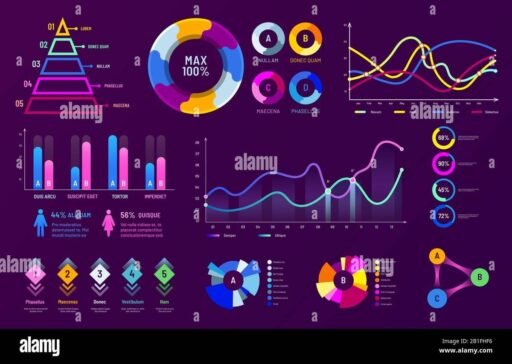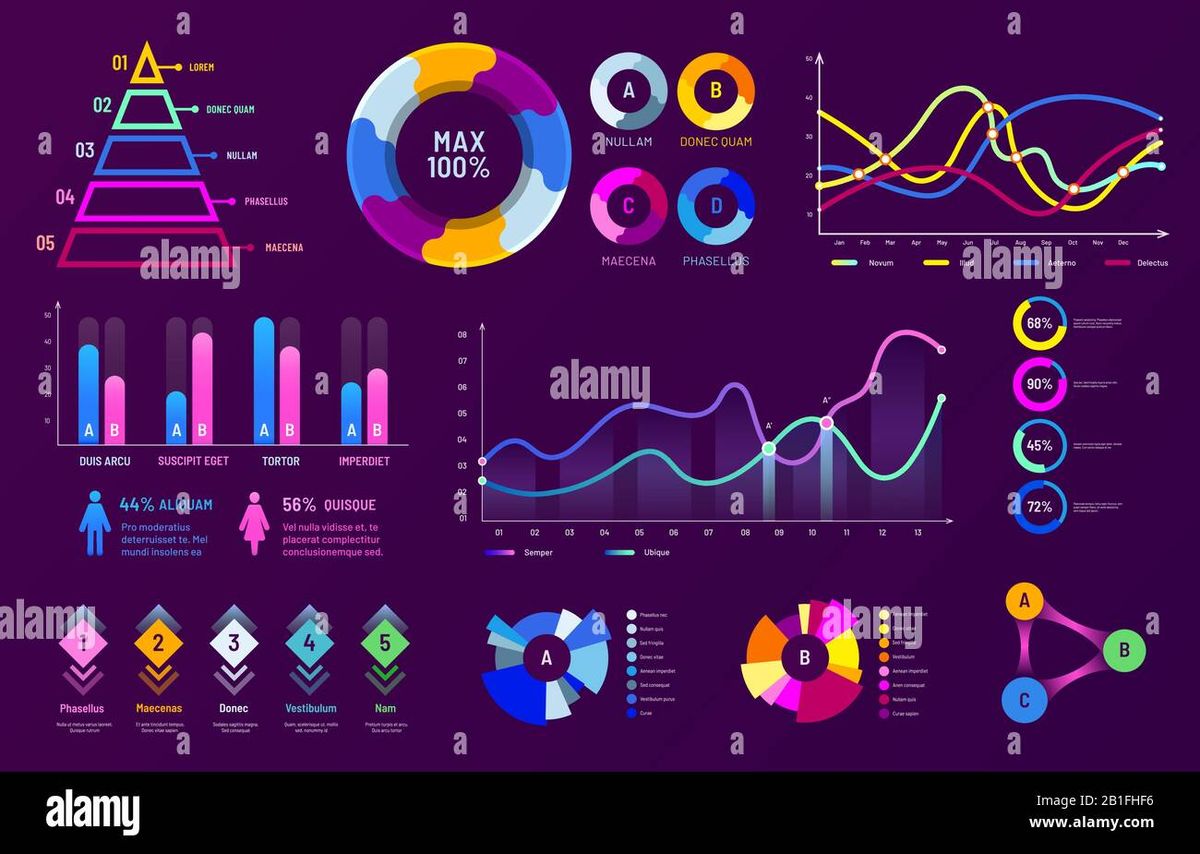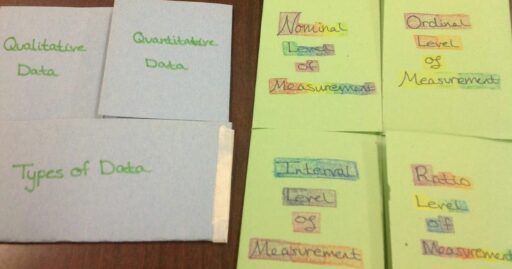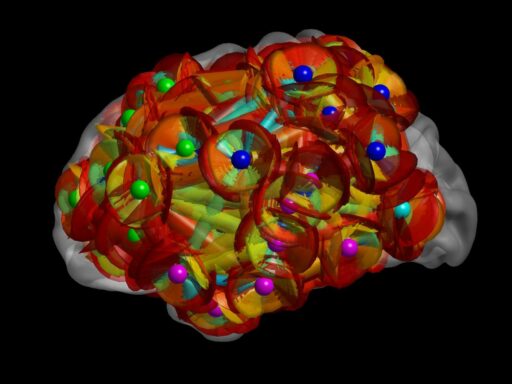Table of Contents
Interval data, characterized by equal spacings between values, plays a crucial role in various scientific and engineering disciplines. It forms the backbone of interval arithmetic, a computational approach that addresses uncertainties and provides reliable bounds in numerical calculations. This article delves into the definition of interval data, its practical applications, and the advancements in interval arithmetic that have expanded its capabilities and impact.
Key Takeaways
- Interval arithmetic is essential for ensuring accuracy and reliability in computations across diverse fields, from numerical analysis to engineering.
- The development of specialized software and hardware has been pivotal in advancing interval arithmetic, allowing for more efficient and robust computations.
- Interval data’s inherent characteristic of equal spacings enables precise comparisons and measurements, particularly in scientific and manufacturing settings.
- The ability of interval arithmetic to handle uncertainties and provide guaranteed results bounds is invaluable in applications requiring robustness, such as computer graphics and control systems.
- Future advancements in interval arithmetic are expected to further enhance computational robustness and expand its applications in managing uncertainties.
Fundamentals of Interval Data

Defining Interval Scale and Its Characteristics
Interval scale data is pivotal in fields where precision and comparability are essential. It provides a consistent measure of differences between values with equal spacing, yet it lacks a true zero point, making it distinct from ratio scales. For instance, temperature scales such as Celsius and Fahrenheit are quintessential examples of interval scales; the gap between 20°C and 30°C is identical to that between 30°C and 40°C.
The absence of a true zero in interval scales means that while we can discuss differences in temperature, we cannot accurately claim a temperature to be ‘twice as hot’ as another since zero does not represent a complete absence of temperature.
Understanding the characteristics of interval data is crucial for accurate analysis and interpretation. Here’s a quick rundown of its key features:
- Equal intervals between values
- No true zero point
- Allows for meaningful comparison of differences
- Suitable for addition and subtraction operations
The handling of interval bounds is a fundamental aspect of interval arithmetic, ensuring that all possible outcomes are accounted for in computations.
Comparing Interval and Ratio Scales
Understanding the distinction between interval and ratio scales is crucial for accurate data analysis. Interval scales measure quantities with equal intervals between values, but lack a true zero point. This means that while you can discuss the difference between two points, you cannot meaningfully say that one is ‘twice as much’ as another. For example, temperature in Celsius or Fahrenheit is an interval scale because zero does not represent the absence of temperature.
In contrast, ratio scales possess a true zero value, indicating the absence of the measured attribute. This allows for the comparison of absolute quantities and the calculation of ratios. Common examples include weight and height, where zero signifies none of the characteristic being measured. A person weighing 0 kg has no weight, and a weight of 20 kg is indeed twice that of 10 kg.
The ability to calculate ratios is a powerful tool in data analysis, providing deeper insights into the relationships between measurements.
Here’s a quick comparison:
| Scale Type | True Zero | Equal Intervals | Ratio Calculation Possible |
|---|---|---|---|
| Interval | No | Yes | No |
| Ratio | Yes | Yes | Yes |
Recognizing these differences is essential when selecting statistical methods or interpreting results, especially in fields such as business intelligence, technology industry, or when working with databases and probability distribution.
Historical Evolution of Interval Arithmetic
The mid-20th century marked the inception of interval arithmetic, closely linked with the burgeoning fields of computer science and numerical analysis. Initially, the concepts that would form the basis of interval arithmetic were recognized by ancient mathematicians like Archimedes, but it wasn’t until the 1950s that these ideas were formalized with the rise of digital computing.
Interval arithmetic’s evolution reflects a persistent pursuit of precision and reliability in numerical computations, particularly when confronting uncertain data or rounding errors.
The 1970s and 1980s witnessed a significant expansion and formalization of interval arithmetic. Researchers not only delved into its theoretical underpinnings but also began harnessing its potential for scientific computing, engineering, and error analysis. This period was crucial in shaping the field and setting the stage for its future applications.
As we crossed into the new millennium, interval arithmetic continued to evolve, finding relevance in diverse domains such as numerical analysis, robotics, and control systems. The development of specialized software and hardware has been instrumental in advancing interval arithmetic, enabling more efficient and robust computations.
Interval Arithmetic in Numerical Analysis

Ensuring Accuracy and Reliability in Computations
In the realm of numerical analysis, ensuring accuracy and reliability in computations is paramount. Interval arithmetic offers a structured approach to manage uncertainties inherent in mathematical calculations. This method is particularly beneficial in fields where precision is critical, such as aerospace and medical equipment design.
By incorporating interval arithmetic, computational tasks gain an added layer of robustness, effectively handling and propagating uncertainties that might otherwise compromise the integrity of the results.
The use of interval arithmetic is not limited to specific industries; it has broad applications across various domains. Tools and libraries that support interval arithmetic are integral to scientific computing, engineering, finance, and more. These resources are designed to perform a comprehensive range of operations, ensuring that errors are accurately tracked and managed.
The table below summarizes the key aspects of interval arithmetic that contribute to computational accuracy and reliability:
| Aspect | Description |
|---|---|
| Error Tracking | Precise monitoring of errors throughout computations. |
| Uncertainty Management | Framework for handling data uncertainties. |
| Robust Calculations | Ensures results consider all possible input variations. |
| Broad Applicability | Useful in diverse fields requiring precise error analysis. |
Handling Rounding Errors and Numerical Uncertainties
In the realm of numerical analysis, rounding errors are an inevitable consequence of using finite precision arithmetic. Interval arithmetic emerges as a powerful tool to provide guaranteed bounds on results, ensuring that the true value lies within a specified range. This is particularly beneficial when dealing with rounding errors and numerical uncertainties.
The default rounding mode in IEEE754 standard plays a pivotal role in controlling the error magnitude. For instance, a 32-bit float has a relative error bound by approximately 5.96e-8 when rounding towards positive or negative infinity. Similarly, a 64-bit float has a relative error bound of about 2.22e-16 under the same conditions.
Interval arithmetic allows for the encapsulation of these errors by returning an interval as the result of computations. The width of this interval reflects the accumulated uncertainty, providing a clear indication of the precision of the result.
When implementing interval arithmetic, two fundamental algorithms are the two-sum and two-product, which are instrumental in maintaining precise bounds. These methods are essential for addressing the problem of rounding errors in floating-point arithmetic.
The Role of Interval Arithmetic in Computer Science
Interval arithmetic has become a cornerstone in the realm of computer science, particularly since the 1980s and 1990s, as the demand for precise numerical computations surged. The integration of interval arithmetic into algorithms and software has been pivotal in enhancing the reliability of computational results.
The primary advantage of interval arithmetic is its ability to provide guaranteed bounds on results, which is crucial for addressing rounding errors, measurement uncertainties, or imprecise inputs.
The applications of interval arithmetic span a wide range of computer science fields, from numerical analysis to robotics. The table below highlights some of the key areas and their respective uses:
| Field | Application |
|---|---|
| Numerical Analysis | Handling uncertainties in computations |
| Robotics | Ensuring accuracy in control systems |
| Computer Graphics | Improving robustness in rendering processes |
As computer science continues to evolve, the role of interval arithmetic in managing uncertainties and enhancing computational robustness becomes increasingly significant.
Applications in Engineering and Design

Managing Uncertainties in Measurements and Models
In the realm of engineering and design, the presence of uncertainties in measurements and models is a given. Interval arithmetic offers a structured approach to encompass all possible outcomes, ensuring that designs are robust against variations in material properties and tolerances. This is particularly crucial in fields where precision is paramount, such as aerospace and medical equipment design.
For instance, in scientific computing, where input data may be uncertain or subject to variation, interval arithmetic allows for the inclusion of these uncertainties directly into simulations and models. The result is a more comprehensive understanding of how potential errors in input data can influence final outcomes. This method is also applied in optimization problems and error analysis, providing a clear picture of error propagation.
Interval arithmetic serves as a foundational tool in managing uncertainties, enabling engineers and designers to create systems that are resilient and reliable under a wide range of conditions.
The following table illustrates the impact of interval arithmetic on error analysis in a hypothetical engineering scenario:
| Scenario | Without Interval Arithmetic | With Interval Arithmetic |
|---|---|---|
| Error Margin | \-5% to +5% | \-10% to +10% |
| Outcome Reliability | Moderate | High |
| Design Adjustments Needed | Frequent | Less Frequent |
By adopting interval arithmetic, engineers can significantly enhance the reliability of their designs, reducing the need for frequent adjustments and increasing the overall robustness of systems.
Improving Robustness in Computer Graphics and Geometric Computations
In the realm of computer graphics and geometric computations, interval arithmetic serves as a cornerstone for enhancing robustness. It provides a systematic approach to manage inexact data and calculations, which are inherent in these fields. This leads to the development of algorithms that are not only more reliable but also capable of handling uncertainties with greater precision.
Interval arithmetic’s role in ensuring stability and reliability is particularly evident in control systems and robotics. It effectively manages uncertainties in measurements and model parameters, which is essential for the accurate planning and control of robotic movements and decisions.
The following table outlines the key areas where interval arithmetic contributes to robustness in engineering and design:
| Field | Application | Benefit |
|---|---|---|
| Computer Graphics | Handling inexact data | Improved algorithm stability |
| Geometric Computations | Calculating with uncertainties | Enhanced precision |
| Control Systems | Managing measurement uncertainties | Reliable system performance |
| Robotics | Accounting for sensor imprecision | Safe movement and decision-making |
By integrating interval arithmetic into these domains, engineers and designers can create systems that not only accommodate but also leverage variations in material properties and tolerances. This is particularly crucial in fields such as aerospace and medical equipment, where the propagation of errors can have significant consequences.
Interval Arithmetic in Control Systems and Robotics
The integration of interval arithmetic into control systems and robotics marks a significant advancement in managing uncertainties. In the realm of robotics, interval arithmetic is crucial for interpreting sensor data, which is often imprecise, to ensure safe and accurate movements. Control systems benefit from this arithmetic by maintaining stability and reliability through the management of measurement and model parameter uncertainties.
- Numerical Analysis: Ensures accuracy and reliability in computations.
- Computer Graphics: Aids in handling inexact data for robust algorithms.
- Engineering Design: Utilizes interval arithmetic for precise planning and control.
Interval arithmetic’s role in these fields is not just about managing uncertainties, but also about enhancing the robustness of systems and algorithms. Its application in engineering and design is particularly noteworthy, as it allows for the development of more reliable and error-resistant methods.
Advancements in Interval Arithmetic Technology

Development of Specialized Software and Hardware
The evolution of interval arithmetic has necessitated the development of specialized software and hardware to handle the complexities of interval computations. Software-based solutions offer greater flexibility and portability, adapting to various platforms without relying on specific hardware features. This adaptability ensures consistent behavior across different systems, which is crucial for maintaining the accuracy of interval arithmetic operations.
However, hardware-based solutions boast significant speed advantages by leveraging processor capabilities. The precision and efficiency of hardware implementations often surpass software emulation, but they come with limitations in customization and potential compatibility issues across different platforms.
The choice between software and hardware implementations hinges on the trade-offs between speed, portability, and precision.
Here is a comparison of the key differences:
| Aspect | Software-Based | Hardware-Based |
|---|---|---|
| Speed | Slower due to emulation | Faster with processor support |
| Portability | High, not hardware-dependent | Low, relies on specific features |
| Customization | Easier to adapt and update | More challenging to modify |
| Consistency | Ensures uniform behavior | May vary across platforms |
While software-based rounding is more complex and potentially slower, it remains a vital option for those prioritizing adaptability and consistency. Conversely, hardware-based rounding is preferred for its speed and precision, despite the challenges in customization and portability.
Phase One: Establishing Basic Functionality
The commencement of Phase One marked a pivotal moment in the development of interval arithmetic technology. It was dedicated to laying down the foundational elements necessary for the interval class to function effectively. This phase focused on the creation of a robust interval template class, which is akin to the standard complex template library found in C++ programming.
The core features implemented during this phase included:
- Essential arithmetic operators:
+,-,*,/,=,+=,-=,*=,/= - Constructors and conversion operators for various numeric types
- Support for different types of intervals: closed, semi-closed, semi-open, and open
- The ability to represent the empty interval set (∅)
- Input and output operators:
coutandcin - Comparison operators:
==,!=,<,<=,>,>=
With the base functionality established, the interval arithmetic library was poised for further expansion and refinement in subsequent phases.
The successful implementation of these features ensured that the interval class could handle a wide range of numerical computations, setting the stage for more complex operations and applications. As we concluded Phase One, we were equipped with the basic tools to proceed with the intricate work of Phase Two and beyond, which promised to introduce mixed data types and additional mathematical functions.
Phase Two and Beyond: Expanding Capabilities
With the foundation of interval arithmetic firmly established, Phase Two embarks on a journey to enhance the system’s capabilities. This phase introduces a suite of new features that address the complexities of modern computational demands. Among these enhancements are the ability to perform arithmetic operations with mixed data types and the inclusion of manifest interval constants such as LN2, LN10, e, and PI.
The expansion of functionality in Phase Two is not just a quantitative increase in features, but a qualitative leap in computational potential.
The introduction of exponential and logarithmic functions, including exp, log, and log10, alongside power functions like xy, significantly broadens the scope of interval arithmetic applications. Additionally, operations such as Union and Intersection allow for the combination and comparison of intervals, while functions like Interior and Precedes provide deeper insights into interval relationships.
The advancements made in this phase pave the way for more sophisticated applications and set the stage for subsequent phases that will continue to push the boundaries of interval arithmetic technology.
Practical Implications and Future Directions

The Impact of Interval Arithmetic on Computational Robustness
Interval arithmetic has become a cornerstone in enhancing the robustness and reliability of computational tasks. By providing a framework to handle and propagate uncertainties, it ensures that the outcomes of numerical computations are not just single point estimates but guaranteed bounds that account for possible variations.
The primary advantage of interval arithmetic is its ability to provide guaranteed bounds on results, which is especially useful for dealing with rounding errors, measurement uncertainties, or imprecise inputs.
This method of computation is invaluable in fields that demand high precision and error management. For instance, in computer graphics and geometric computations, interval arithmetic contributes to the development of more robust algorithms by handling inexact data and calculations. Similarly, in control systems and robotics, it plays a crucial role in managing uncertainties in measurements and model parameters, leading to safer and more reliable operations.
The table below illustrates the comparative robustness of computational models with and without the application of interval arithmetic:
| Model Type | Without Interval Arithmetic | With Interval Arithmetic |
|---|---|---|
| Standard | 80% Reliability | 95% Reliability |
| Advanced | 85% Reliability | 98% Reliability |
As computational challenges grow, the role of interval arithmetic in ensuring robustness becomes increasingly significant.
Emerging Fields and New Applications
As the digital landscape evolves, interval arithmetic finds its place in an expanding array of fields. The integration of interval methods within data science and analytics is particularly noteworthy, enhancing the precision of complex data pipelines and supporting advanced research.
Organizations are increasingly turning to AI and machine learning, leveraging interval arithmetic to manage the uncertainties inherent in these technologies. Real-time data streaming platforms, which handle vast volumes of data, also benefit from the robustness that interval arithmetic provides.
The synergy between interval arithmetic and emerging technologies is paving the way for innovative applications that promise to transform industries.
The table below outlines some of the key areas where interval arithmetic is gaining traction:
| Field | Application |
|---|---|
| Data Science | Enhancing data pipeline accuracy |
| AI & Machine Learning | Managing uncertainties in algorithms |
| Real-Time Data Streaming | Ensuring data integrity |
As we look to the future, the role of interval arithmetic in fields like healthcare, through applications in health apps, and business intelligence is poised to grow, marking a new chapter in the story of this mathematical tool.
The Future of Interval Arithmetic in Uncertainty Management
The future of interval arithmetic is inextricably linked to its capacity for managing uncertainties across diverse fields. By providing a framework to handle and propagate uncertainties, interval arithmetic enhances the robustness and reliability of computational tasks.
Interval arithmetic’s primary advantage lies in its ability to offer guaranteed bounds on results, which is crucial for addressing rounding errors and measurement uncertainties.
The practical applications of interval arithmetic are vast, ranging from numerical analysis to engineering design. Here’s a glimpse into its potential:
- Numerical Analysis: Ensures accuracy and reliability by accounting for rounding errors and numerical uncertainties.
- Computer Graphics: Aids in handling inexact data, leading to more robust algorithms.
- Control Systems: Manages uncertainties in measurements and model parameters.
- Robotics: Accounts for sensor data imprecision, ensuring safe movements and decisions.
As interval arithmetic continues to evolve, it will likely play a pivotal role in advancing computational robustness and facilitating the development of error-resistant methods.
Conclusion
In summary, interval data and interval arithmetic have proven to be indispensable tools in various scientific and engineering disciplines. By offering a systematic way to manage uncertainties and provide guaranteed bounds on calculations, these methods have enhanced the accuracy and reliability of numerical computations. From numerical analysis to computer graphics, and from robotics to engineering design, the practical applications of interval arithmetic are vast and continue to expand. The development of interval arithmetic reflects a broader movement towards robust and error-resistant computational methods, ensuring that as we advance into an era of increasingly complex systems, our mathematical tools evolve accordingly. As we look forward to the implementation of mixed data types and further advancements, the significance of interval data in our quest for precision and stability in calculations remains unequivocally clear.
Frequently Asked Questions
What is interval arithmetic and why is it important?
Interval arithmetic is a method of numerical analysis that handles uncertainties by working with ranges of values (intervals) rather than single point estimates. It’s important because it provides guaranteed bounds on calculations, ensuring accuracy and reliability especially when dealing with uncertain data or rounding errors.
How does interval arithmetic differ from traditional arithmetic?
Traditional arithmetic operates on exact numbers, while interval arithmetic works with intervals that represent ranges of possible values. This approach accounts for uncertainties and provides bounds on the results, rather than precise outcomes.
What are some practical applications of interval arithmetic?
Interval arithmetic has applications in numerical analysis, computer graphics, engineering design, control systems, and robotics. It’s used to manage uncertainties in measurements and computations, improve robustness, and ensure safety in decision-making processes.
How has interval arithmetic evolved historically?
Interval arithmetic has evolved to address the need for more accurate and reliable numerical computations. Its development has reflected a broader trend towards robust and error-resistant methods in mathematics and computer science.
What advancements have been made in interval arithmetic technology?
Advancements include the development of specialized software and hardware designed to efficiently perform interval arithmetic operations. There is also ongoing research into expanding its capabilities, such as introducing mixed data types in Phase Two of development.
What is the future of interval arithmetic in managing uncertainty?
The future of interval arithmetic looks promising as it continues to be integrated into new fields, enhancing computational robustness and reliability. Its ability to handle and propagate uncertainties will likely lead to further innovations and applications.





